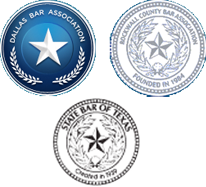How the Bankruptcy Court Determines Your Eligibility
 Under the means test established by the 2005 revisions to the federal bankruptcy laws, the bankruptcy court will review potential Chapter 7 discharge petitions to determine whether the debtor has the means to repay creditors over a three-to-five-year period. Here’s how the means test addresses the income of the debtor.
Under the means test established by the 2005 revisions to the federal bankruptcy laws, the bankruptcy court will review potential Chapter 7 discharge petitions to determine whether the debtor has the means to repay creditors over a three-to-five-year period. Here’s how the means test addresses the income of the debtor.
The first step in the means test is the determination of “current monthly income.” To determine current monthly income, the court looks at your average monthly income for the six month period prior to the filing of your petition. This includes all forms of income, whether taxed or not, such as:
- wages, tips and salaries, including bonuses and commissions
- business income
- investment income
- income from retirement plans
- disability payments
- payments to cover household expenses
- Social Security payments
Generally, the court will look at the total income for that period and divide by six.
Once your current monthly income is calculated, the bankruptcy court will compare your average current monthly income with the median in your state, also taking into account your household size. If you fall below the median, you automatically pass the means test and can file for protection under Chapter 7.
If your income exceeds the median, you may still be able to discharge debts through Chapter 7, but the computation will be far more complex. The court will have to determine how much “disposable income” you have. If you have a specific amount of disposable income, you won’t have access to Chapter 7.
Contact Heath, TX Bankruptcy Attorney Carrie Weir
At the Law Office of Carrie L. Weir, I provide a free initial consultation to anyone with questions or concerns regarding a personal bankruptcy filing. Contact my office by e-mail or call me at 972-772-3083 to schedule a private consultation. With offices in Rockwall, Texas, I represent clients in Heath, Greenville, Lavon, Wylie, Mesquite and Rowlett.








Speak Your Mind